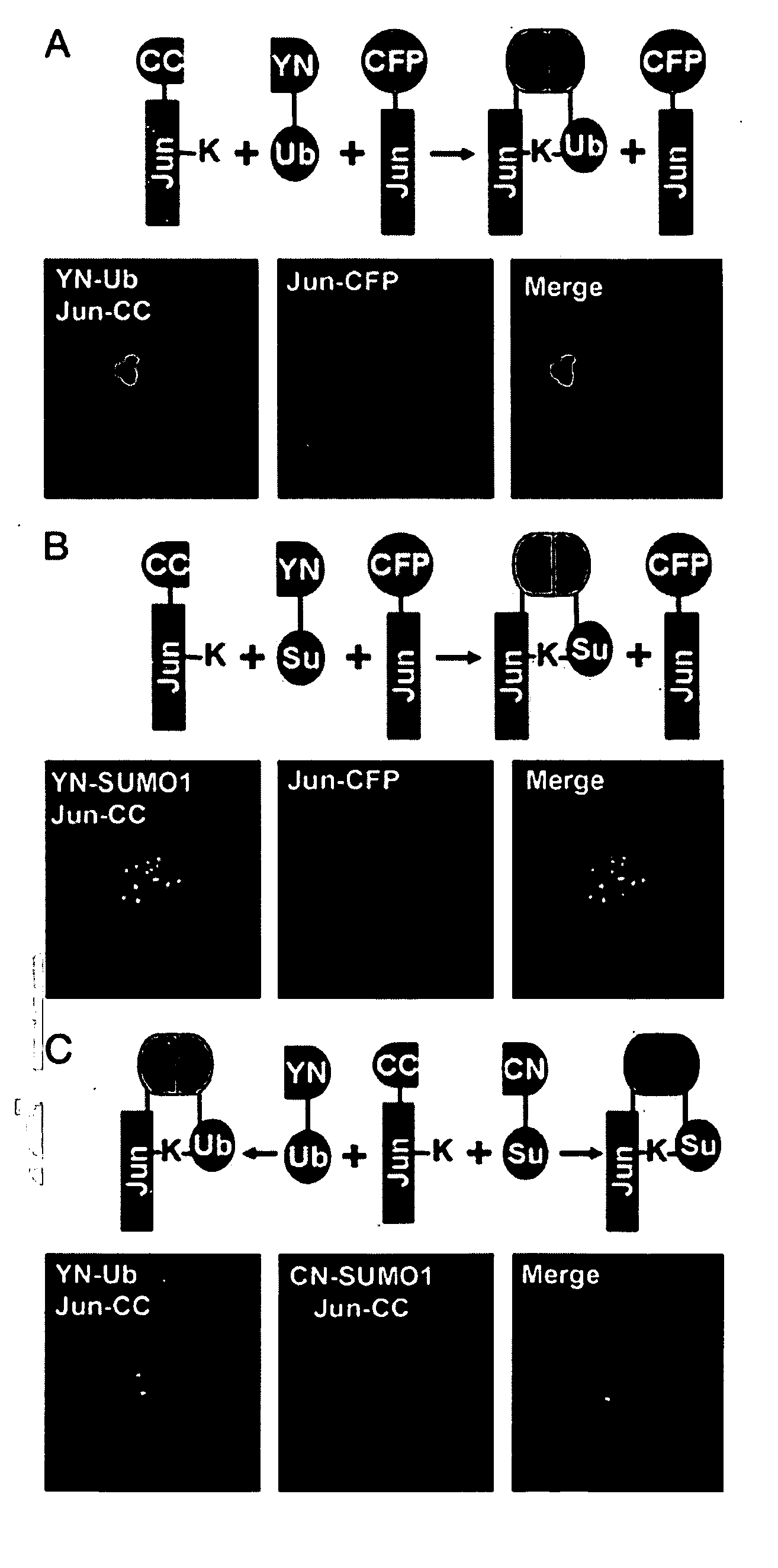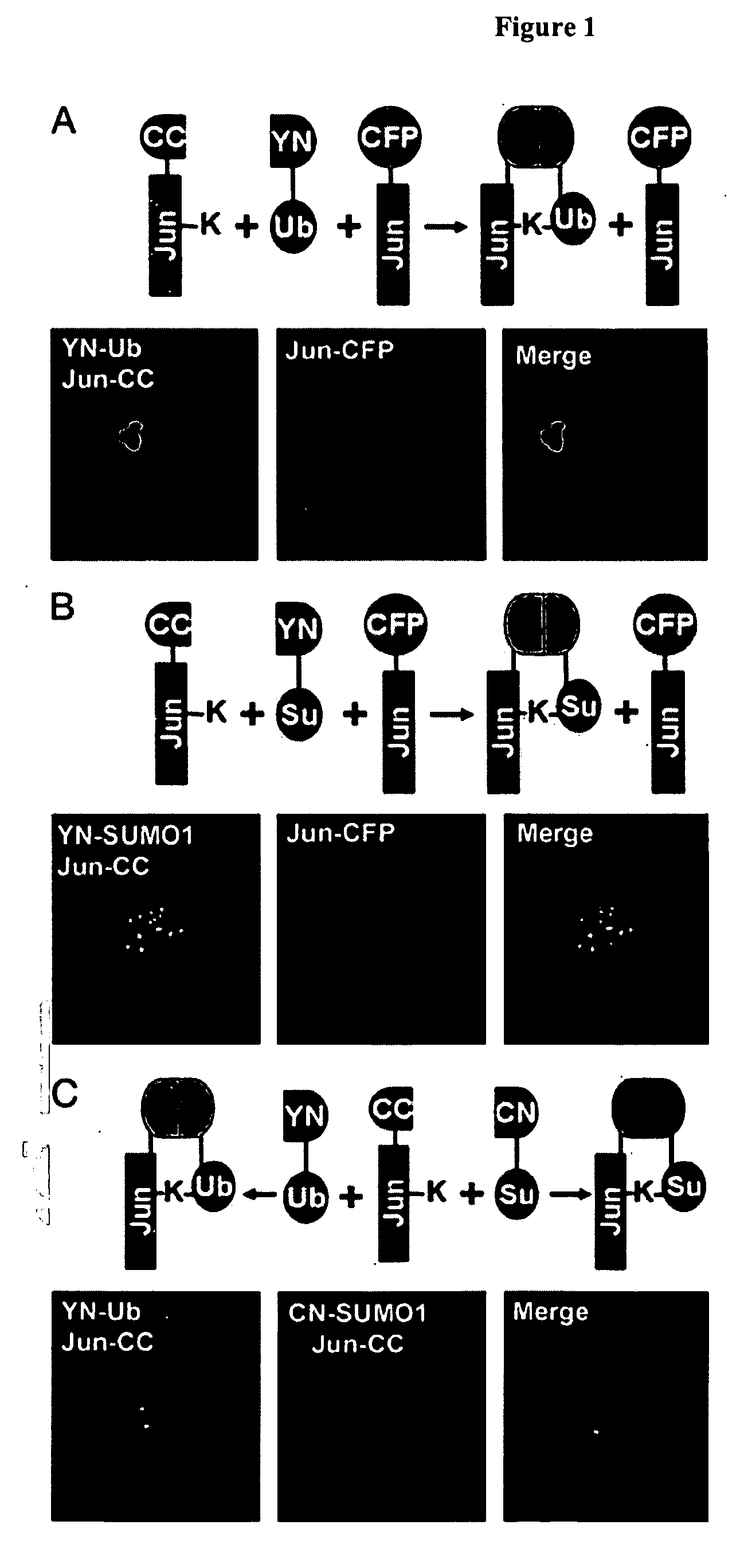Ubiquitin mediated fluorescence complementation assay
a fluorescence complementation and ubiquitin technology, applied in the field of ubiquitin mediated fluorescence complementation assay, can solve the problems of cumbersome methods and subject to interferen
- Summary
- Abstract
- Description
- Claims
- Application Information
AI Technical Summary
Benefits of technology
Problems solved by technology
Method used
Image
Examples
example 1
[0133] This Example describes the development and application of ubiquitin mediated fluorescence complementation assays.
[0134] Plasmid Construction. The sequences encoding amino acids residues 1-172 of enhanced yellow fluorescent protein and enhanced cyan fluorescent protein (ECFP) (Clontech) were fused to the 5′ ends of the coding regions for ubiquitin and small ubiquitin-related modifier 1 (SUMO1) by using ANSSIDLISVPVEYPYDVPDYASR (SEQ ID NO:1) linkers. The chimeric coding regions were cloned into the pFLAG-CMV2 (Sigma) to produce plasmids encoding YN-Ub, YN-SUMO1, and CN-SUMO1. The plasmids encoding Jun and Jun257-318 fused to amino acid residues 155-238 of ECFP were as described (Hu et al., (2002) Mol. Cell 9, 789-798; Hu et al., (2003) Nat. Biotechnol. 21, 539-545) and are designated Jun-CC and bJun-CC. The plasmid encoding Jun-CFP was constructed by inserting the coding region of Jun into pECFP (Clontech). The Y170F mutation in Jun (JunY170F), the deletion of G100 and G101 in...
PUM
| Property | Measurement | Unit |
|---|---|---|
| fluorescence complementation assay | aaaaa | aaaaa |
| fluorescent | aaaaa | aaaaa |
| fluorescence | aaaaa | aaaaa |
Abstract
Description
Claims
Application Information
 Login to View More
Login to View More - R&D
- Intellectual Property
- Life Sciences
- Materials
- Tech Scout
- Unparalleled Data Quality
- Higher Quality Content
- 60% Fewer Hallucinations
Browse by: Latest US Patents, China's latest patents, Technical Efficacy Thesaurus, Application Domain, Technology Topic, Popular Technical Reports.
© 2025 PatSnap. All rights reserved.Legal|Privacy policy|Modern Slavery Act Transparency Statement|Sitemap|About US| Contact US: help@patsnap.com



